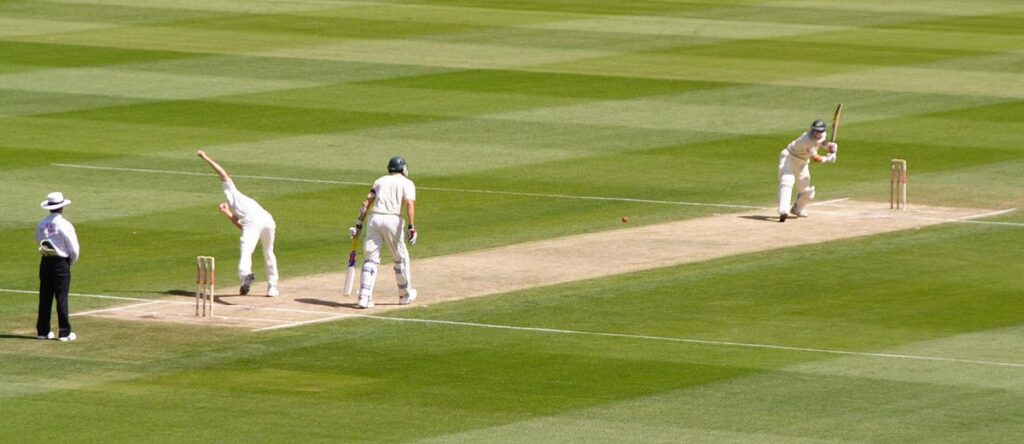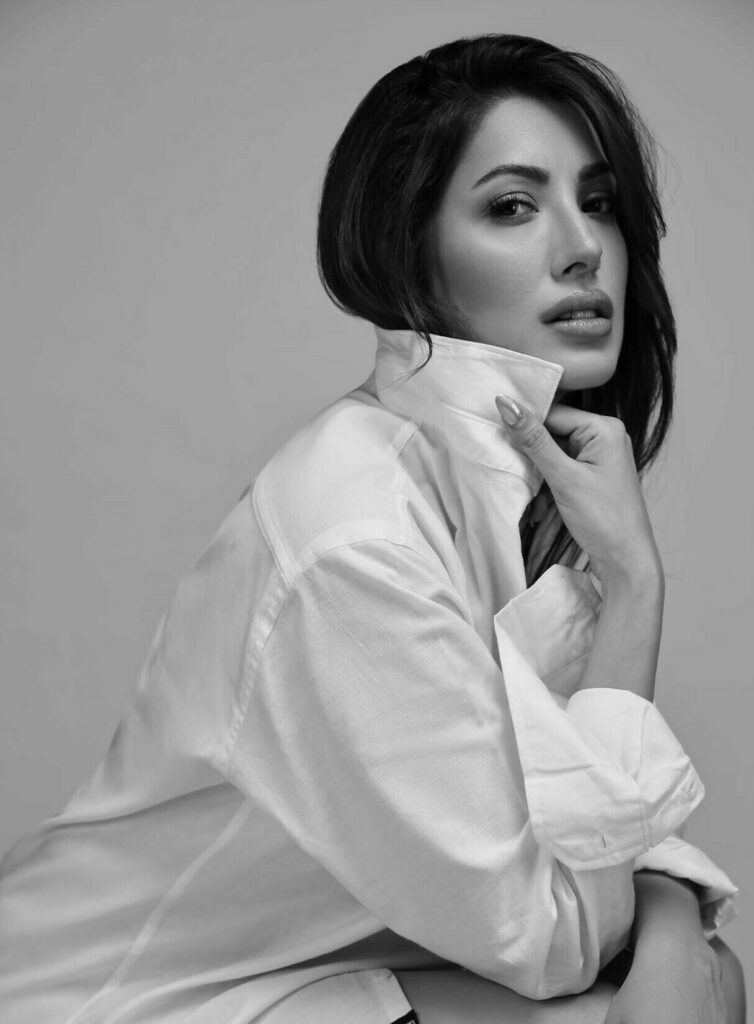As the Pakistani woman evolves, so do her jhumkay
Written by FM 100 on April 24, 2024
As a Pakistani woman, when I walk through the tiny alleys of a public bazaar, or through air-conditioned malls, my attention is always focused on shiny jewellery.
I stop at the sounds of colourful bangles, even if I do not need them. The delicate hues remind me of my childhood and my excitement to purchase them on Eid. It also takes me back to when the world convinced me that it was ‘cool’ to be a tomboy, and my lack of femininity made me resilient and strong. However, as I grew up, I unlearned many concepts, which returned to me my love for jewellery, especially jhumkay.
The small mirrors placed at shops of beautiful, traditional jhumkay make me stop and place them in my ear, often only for me to turn and look at a woman standing next to me, who will definitely smile because she understands the feminine urge. Our womanhood lies in bangles, gajray, chikankari kurtas and of course, jhumkay — all of which remind us how beautiful the concept of femininity is.
Women have been told for years that their femininity is the reason why they are not taken seriously, that if, as a woman, you wear a lot of makeup and jewellery, you’re not smart. However, as we age, we realise that our strength comes from within, and we must embrace the joys of our womanhood, especially in ornaments such as jhumkay which are the best of both worlds — Western and Eastern.
The royal jewels
Over the past few years, these intricately designed pieces of jewellery have gained immense popularity, evolving through a myriad of gorgeous designs. With roots tracing back to the Mughal era, jhumkay carry significant history.

“The origin of jhumka earrings dates back to ancient India, where they were favoured by royalty and aristocrats,” Abdul Rehman, a Bengali jhumka artisan, told Images.
“Royal women would get them designed how they wanted and pair them with heavy dresses. It was a symbol of wealth and femininity,” he added.
“Initially crafted from gold and embellished with precious gems like diamonds and pearls, these ornaments have undergone changes over time. Nowadays, jhumka earrings are made from various materials like silver, brass, and glass, catering to women from different societal backgrounds,” Rehman explained.
Today’s jhumkay come in several forms and can be crafted through various methods, enhancing their versatility. From the streets of Old Lahore to Meena Bazaar in Karachi, women wear them to keep their softness intact amidst the patriarchal chaos. The jewellery we wear reminds us that no matter how much the world tries to bring us down, in the words of Allama Iqbal, “Wujood-e-zan se hai tasweer-e-kaiynaat mein rung [the colours of the universe will always come together because of our existence]“.
The road to evolution
Muhammad Saad, another artisan hailing from Lahore and based in Bahawalpur, has been in the jewellery-making business for 50 years and claims to have one of the oldest jewellery shops in Bahawalpur. He went into the significance of jhumkay in Punjabi culture.
“Regarded as emblems of grace and charm, women wear them to beautify themselves and showcase their heritage,” he explained. Saad added that in some Punjabi communities, they’re considered status symbols and are gifted to young girls as a rite of passage into womanhood.
Explaining the idea and execution of his work, he shed light on the design process which, according to him, revolves around choosing the right material so that it gets moulded into shape without any hassle.
“Jhumka earrings are available in a range of designs, from simple and classy to detailed and ornate styles. They may include decorations like beads, stones, or delicate filigree patterns. Certain jhumka earrings showcase traditional Punjabi patterns like flowers, paisleys, and birds, while others draw inspiration from contemporary fashion,” he said.
“Women today want their jewellery to be exactly like them — beautiful yet strong, so I focus on making earrings that won’t make their ears feel too heavy. I have light-weight jhumkay which go well with both formal and fancy dresses. The work has evolved over the years and my craftsmen have understood the assignment well,” Saad chuckled.

According to an article by Prachi Raniwala for Natural Diamonds, the origin of this popular earring style can be traced back to ancient temple statues from the Chola Dynasty, which make them as old as 300 BCE.
“As per second-generation jeweller Fleur Van Gelder, whose label Van Gelder Indian Jewellery has been researching Indian heritage jewellery since the 1980s, deities were adorned with typical temple jewellery as a tribute,” Raniwala wrote.
“As a consequence of this, traditional temple dancers started wearing the same type of jewels as well,” she added.
Mola Baksh, another jhumka craftsman from Afghanistan, confirmed her statement and shared some additional intriguing details.
“After originating in South India, jhumka earrings became widely popular across the country, especially among royal families. However, each royal family put their own spin on the bell shape to create a unique style,” he said.
“Queens of the past were expected to wear elaborate jewellery throughout the day, including necklaces, maang tikka, earrings, and bangles made of polished or uncut diamonds. Since jhumkay are hollow inside, they were lighter compared to other jewellery pieces. This made them both stylish and comfortable to wear, promising a fancy look without any hassle.”
Since he possessed a lot of experience in making these ornaments, he was well-versed in the history of these intricate pieces of beauty. He explained how the concept of jhumka was derived from kanphool, a classic ear stud in the shape of a flower which was commonly worn with the help of a chain.
“This was frequently paired with a decorative chain known as sankali, which extended into the hair and was secured with a small hook — featuring the familiar jhumka dome, as we recognise it today,” he said.
The literary touch
With their constant evolution, jhumkay have been through multiple shapes and touches, they have changed and adopted multiple styles over the years.
If you scroll through Instagram frequently, you must have come across advertisements of jewellery with Urdu poetry and phrases written all over it. Initially, the idea was termed “tacky” by some X (formerly Twitter) users, however, slowly the concept grew and now people frequently wear them.

“The idea came from me and my choices, to be very honest. I have always been a girl who loved flowers, poetry, literature and everything wholesome. So when I started, my sole focus was to bring something new to the market, and also to focus on the essence of womanhood,” Sara Gohar, the founder of Gohar Jewels said.

“When I initially started, my Urdu handwriting was not very good. However, with practice and time, it got better. My work was widely appreciated within Pakistan and abroad,” she added.
Irenic, another brand, is also doing similar work. The collection on their website is mostly oxidised Afghan jhumkay with an ethnic touch that traces back to the Mughal era. They look extravagant yet feel very light on their ears.
“Women wear jewellery as a statement, and in this fast-paced world, they also need comfort with fashion. So the entire idea of stocking jhumkay which are light on ears but look the same is to combine ease and good looks,” Sumbul Jawed, the owner explained.
“The idea was to cater to all kinds of people. The urban population usually prefers the Western kind of jewellery, while the rural side prefers the Eastern side. So a balance of both is what we aim for and so far we’ve been successful,” she said.
All these stories have taught me one thing, and that is the evolution of womanhood in different forms. Each woman is looking for a different thing when it comes to aesthetics, however somehow all of us end at one point, and we’re all on the journey of discovering ourselves. A simple piece of jewellery had to evolve because of us, which just indicates that womanhood is a process, and it’s happening gradually, taking all of us where we’re exactly meant to be.




